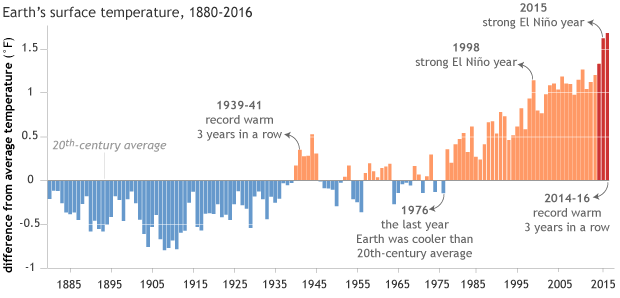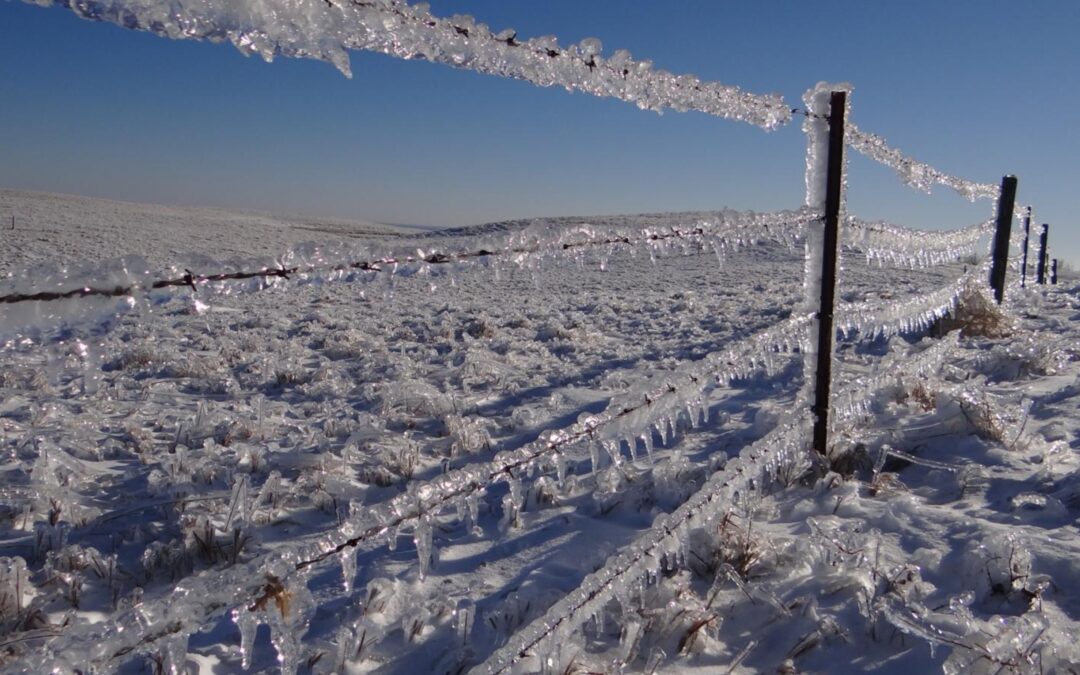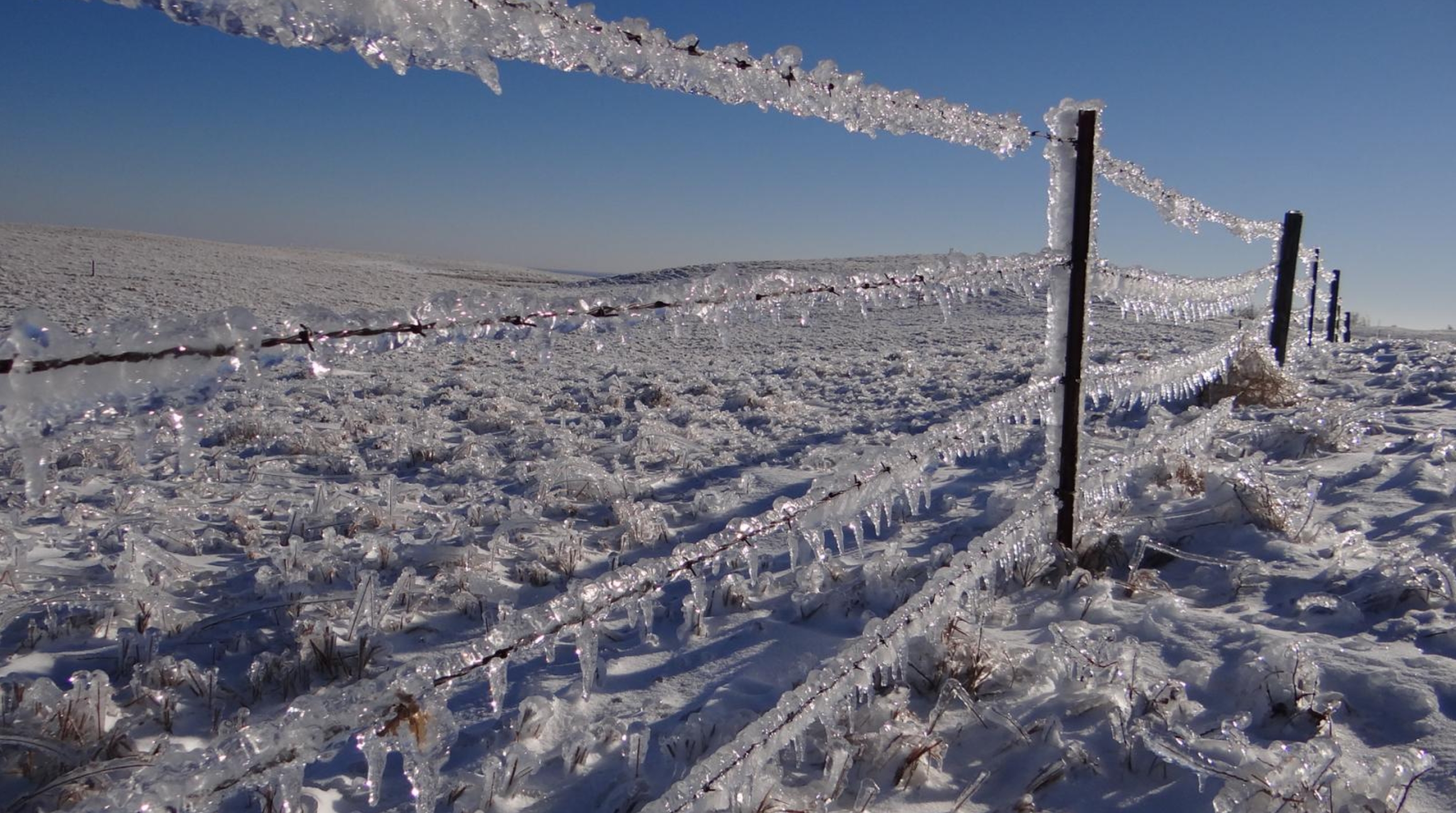Good Weather News: A Big January Thaw is Coming
I can’t prove it, it’s just a hunch, but I’m starting to think the 2-week stretch since Christmas will wind up being the coldest of the winter. We’ll see more subzero swipes, but looking at duration and intensity of the cold, the worst of the windchill may be in our rear-view mirror.
Which brings up an unpleasant observation: meteorologists often leave you feeling much worse than you thought possible. Heat index, windchill, polar vortex? Now there’s AWSSI, or Accumulated Winter Season Severity Index, from the Midwestern Regional Climate Center. It factors snowfall and persistence/intensity of cold. Believe it or not the Twin Cities is still enjoying an “average” winter, but a “moderate” winter for La Crosse, “severe” at Duluth and “extreme” for many big eastern cities.
A thaw is coming, in fact daytime highs may be above freezing Monday into Thursday of next week; ECMWF guidance hinting at low 40s around midweek. To which I reply – hallelujah!
Drizzle is possible next week; even a period of light rain next Wednesday into Thursday. Talk about adding insult to injury for snow lovers. I’m just the messenger.
An “Average Winter” for the Twin Cities So Far? According to the AWSSI Index, developed by the Midwestern Regional Climate Center, that’s the case for the Twin Cities and St. Cloud, although La Crosse is experiencing a Moderate Winter, Duluth, International Falls and Grand Forks a Severe Winter. Here’s more information on the Accumulated Winter Season Severity Index: “Winter seasons have significant societal impacts across all sectors ranging from direct human health and mortality to commerce, transportation, and education. The question “How severe was this winter?” does not have a simple answer. At the very least, the severity of a winter is related to the intensity and persistence of cold weather, the frequency and amount of snow, and the amount and persistence of snow on the ground. The Accumulated Winter Season Severity Index (AWSSI) was developed to objectively quantify and describe the relative severity of the winter season.”
Cause for Noisy Celebration? Just about anywhere else in the USA people would look at these predicted temperatures and shudder. Minnesota? Cheers and high-fives! I may even take off a layer or two next week as temperatures rise above 32F for the first time since December 19. ECMWF guidance: WeatherBell.
Interesting Data Point. I’m not buying it yet, but NOAA’s GFS model is printing out 50-degree warmth for the end of next week in the Twin Cities. I doubt it will verify, but there’s no doubt that milder, Pacific air will be sweeping across much of the USA, starting next week.
Tne Bomb Cyclone By The Numbers. Jason Samenow has a good recap at Capital Weather Gang. Here’s an excerpt: “…In Tallahassee, it snowed (0.1 inches) for the first time in 28 years. Meanwhile, in Savannah, ice changed over to snow, offering a rare coating on the region’s palmetto trees. Some 1.2 inches accumulated, one of the snowiest days in the city’s history. In Charleston, snow piled up to 5.3 inches, making Wednesday the city’s third-snowiest day on record. Here are some notable totals up the coast, from the Virginia Tidewater region to Maine, where as much as a foot and a half accumulated:
- Bangor, Maine: 18.3 inches
- Cape May, N.J.: 17 inches
- Islip, Long Island: 15.8 inches
- Atlantic City: 14.2 inches
- Providence, R.I.: 13.3 inches
- Boston: 13.2 inches...”
Image credit: “NOAA satellite image of ocean storm, or “bomb cyclone,” Jan. 4.” (NOAA)
2017’s Weather Disasters Broke Insurance Records: From Climate Nexus: “Insurance claims due to natural disasters reached a record $135 billion in 2017, insurance firm Munich Re reported Thursday. The world’s largest insurance firm said that the United States, which faced three major hurricanes and multiple wildfires, made up nearly 50 percent of global insured losses, compared to its average rate of 30 percent. The 2017 hurricane season caused $215 billion in damage worldwide, making it the costliest on record. “Even though individual events cannot be directly traced to climate change, our experts expect such extreme weather to occur more often in future,” Munich Re board member Torsten Jeworrek said in a statement.” (New York Times $, FT $, Reuters, Deutsche Welle. Commentary: ThinkProgress, Joe Romm column)
August 25, 2017 GOES-16 image of Hurricane Harvey courtesy of NOAA.
2017 Set a Record for Losses From Natural Disasters. It could Get Worse. The New York Times reports.
Weather Satellite and Scientists May Face Funding Drought Despite Devastating Hurricanes. An Op-Ed at TheHill caught my eye – here’s a clip: “…The recurrence of extreme weather is nearly assured. Funding for the JPSS program is not. The JPSS program will continue until 2038 — if Congress continues to fund it. The success of a satellite program does not hinge solely on successful launches to replace older satellites, however. Congress must also fund the applied scientific research necessary to use the new data and improve weather forecasts in the decades to come. JPSS will assist meteorologists in monitoring the evolving state of the atmosphere and oceans, bettering predictions of severe weather events. This is information we need to know. In 2017, the United States had 15 weather disasters with losses exceeding $1 billion each, for a cumulative cost of over $25 billion, according to government estimates...”
File image: NOAA NESDIS.
Oceans Suffocating as Huge Dead Zones Quadruple Since 1950, Scientists Warn. The Guardian reports: “Ocean dead zones with zero oxygen have quadrupled in size since 1950, scientists have warned, while the number of very low oxygen sites near coasts have multiplied tenfold. Most sea creatures cannot survive in these zones and current trends would lead to mass extinction in the long run, risking dire consequences for the hundreds of millions of people who depend on the sea. Climate change caused by fossil fuel burning is the cause of the large-scale deoxygenation, as warmer waters hold less oxygen. The coastal dead zones result from fertilizer and sewage running off the land and into the seas…”
Photo credit: “A fisherman on a beach in Temuco, Chile that is blanketed with dead sardines, a result of algal blooms that suck oxygen out of the water.” Photograph: Felix Marquez/AP.
Oceans Under Siege: Climate Nexus Hot News provides additional perspective and links: “Two studies published in the journal Science Thursday shed new light on how warming is wreaking havoc on the world’s oceans. A study examining reefs finds that bleaching events are happening four to five times as frequently as they were in 1980. While in past decades, bleaching was “relatively rare,” researchers write, today’s “narrow recovery windows” make it extremely difficult for reefs to fully recover between bleaching events. Separate research finds that oxygen-free “dead zones” in open oceans—caused by warming seas holding less oxygen—have increased fourfold since 1950, while low-oxygen areas off of coasts have increased tenfold in the same time period.” (Both studies: AP. Corals: New York Times $, Washington Post $, The Guardian, Reuters, The Verge, Bloomberg, USA Today, BBC, The Atlantic. Oxygen: The Guardian, Newsweek, National Geographic)

In All Likelihood, Someday the Sun Will Knock Out the Grid. A story at Popular Science increased my desire to get off the grid: “…Today, modern society relies on exactly the devices that such a storm disrupts. A 2017 study in the American Geophysical Union’s Space Weather journal estimated the effect if a solar storm as great as the largest on record—an 1859 shakeup called the Carrington Event—were to strike again. It would cost the United States $42 billion per day. The repercussions could last years, perhaps decades. The power grid could fail. You wouldn’t be able to get money out of a bank. Businesses couldn’t operate. Water pumps wouldn’t work; phones either. Food would go bad. Governments would have a hard time governing. “We have created an incredible vulnerability, unlike any other,” says Bill Murtagh, program coordinator for the Space Weather Prediction Center, the celestial arm of the National Oceanic and Atmospheric Administration, headquartered in Boulder, Colorado…”
File image: NASA.
“Like Thunder in the Ground.” Texans Fear Link Between Quakes and Fracking Waste. The Guardian reports: “…Significant new research led by a seismologist at Southern Methodist University in Dallas and published in November indicates that the spate of tremors in north Texas is occurring on faults that were inactive for at least 300m years. Using a different analytical technique to earlier studies, it backs up previous conclusions that the only plausible explanation for the earthquakes is human activity. In Fort Worth there are 2,127 pending and approved gas well drilling permits within the limits of the city, which has a population of more than 850,000. Since 2008, the Fort Worth Basin has changed from experiencing no confirmed recorded earthquakes to hundreds, mostly minor. The likely primary culprit is not hydraulic fracturing (fracking) in itself, but the process of wastewater injection…”
Photo credit: “Road signs in Texas illustrate both sides of the fracking debate. The industry creates jobs but environmentalists and others have voiced concerns.” Photograph: Alamy
Big Money is Backing Out of Fossil Fuel Industry, Moving Into Greener Alternatives. Here’s an excerpt from PRI, Public Radio International: “…That same day, Scott Stringer, the comptroller of New York City, announced a similar fossil fuel free strategy for the city’s pension fund, which is comparable in the number of assets. “Those are two of the 20 largest funds on the planet,” McKibben says. “So, the same day that in Washington they were passing the tax bill that gave ludicrous tax breaks to the fossil fuel industry in the world’s center of finance, New York, they were saying, ‘No, we don’t think this is good business anymore.’ “If the center of the world’s financial markets is sending the signal that we don’t want to do this anymore, it’s going to get harder and harder for the Exxons and Chevrons of the world to keep out there finding more fossil fuels that we don’t need and can’t burn…”

2017 Was Safest Year on Record for Airline Passengers. There was some good news last year. Here are a couple of clips from The Independent: “In a year when more people flew to more places than ever, 2017 was the safest on record for airline passengers. The Dutch-based aviation consultancy, To70, has released its Civil Aviation Safety Review for 2017. It reports only two fatal accidents, both involving small turbo-prop aircraft, with a total of 13 lives lost. No jets crashed in passenger service anywhere in the world…The report warns that electronic devices in checked-in bags pose a growing potential danger: “The increasing use of lithium-ion batteries in electronics creates a fire risk on board aeroplanes as such batteries are difficult to extinguish if they catch fire. “Airlines worldwide are training their crews to fight any fires in the cabin; the challenge is keeping such batteries out of passenger luggage.” In 2016, 271 people lost their lives in seven fatal events…”

Robots Are Going to Turbocharge One of Society’s Biggest Problems. Quartz explains: “…On the flip side, it warned that automation will widen the pay gaps for women and minorities since robots are likely to phase out lower-skilled jobs over the next few decades, and the jobs created in their place will be more highly skilled. Low-wage jobs are five times more likely to be automated than higher paid jobs, according to the report. “Automation risks increasing gender and race inequality,” says IPPR, noting that women and some minority groups are more likely to work in low-skill, “automatable” occupations. “The impact on inequality will depend on the skill-level of new jobs created and individuals’ ability to access opportunities…”

In Search of the Perfect Nap. 20-30 minutes seems about right. A story at PopSugar reminded me that I need a nap: “…A CDC study found that more than 40 million workers get fewer than six hours a night, in spite of a National Sleep Foundation report that indicates that we all need between seven and nine hours a night. Needless to say, coming up that light on your sleep needs makes naps a necessity to just catch up on rest and be able to get through all the tasks we have on our schedules on a daily basis. If you reach for sugar in the afternoon to stave off the Zs, then you’re also a person who could use a nap — and better nutrition!...”
Ohio Man Used Bank Robbery Cash to Buy Engagement Ring. AP has the unlikely story: “Authorities say a man robbed a bank in Ohio and used the money to buy his fiancee an engagement ring. The Hamilton-Middletown Journal-News reports 36-year-old Dustin Pedersen has been charged with robbing a Fifth Third Bank branch in Trenton on Dec. 16. Police say records show that Pedersen spent $4,500 on an engagement ring less than an hour after the robbery and presented it the next day. A Trenton police detective said in court Wednesday the robbery netted $8,800…”
3 F. high on Friday in the Twin Cities, after waking up to -10 F.
24 F. average high on January 5.
2 F. high on January 5, 2017.
January 5, 2012: Record warmth is felt across the state. Many locations in western Minnesota soared over 50 degrees, with temperatures reaching the 60s at Marshall, Canby, and Madison. This was the first record of any 60 degree temperatures in Minnesota during the first week of January.
SATURDAY: Fading sun, late flakes? Winds: SE 8-13. High: 21
SATURDAY NIGHT: Chance of light snow or flurries. Low: 10 (rising)
SUNDAY: Mostly cloudy, remove a layer of clothing. Winds: SW 7-12. High: 29
MONDAY: Gray, but milder than average. Winds: W 3-8. Wake-up: 22. High: 34
TUESDAY: Overcast, hints of February in the air. Winds: SE 10-15. Wake-up: 28. High: 35
WEDNESDAY: A little drizzle and rain. Icy north? Winds: S 8-13. Wake-up: 33. High: near 40
THURSDAY: Rain ends as a little wet snow. Winds: NW 10-15. Wake-up: 32. High: 36
FRIDAY: Some sun, cold breeze returns. Winds: NW 8-13. Wake-up: -3. High: 11
Climate Stories…

2017 Was Second Hottest Year on Record, After Sizzling 2016. Reuters has details: “Last year was the second hottest worldwide on record, just behind a sweltering 2016, with signs of climate change ranging from wildfires to a thaw of Arctic ice, a European Union monitoring center said on Thursday…Last year was slightly “cooler than the warmest year on record, 2016, and warmer than the previous second warmest year, 2015”, it said. Temperature records date back to the late 19th century. “It’s striking that 16 of the 17 warmest years have all been this century,” Jean-Noel Thepaut, head of Copernicus, told Reuters, adding there was overwhelming scientific consensus that man-made emissions were stoking the warming trend…”
Graphic: NOAA’s climate.gov.
Weather “Bombs” and the Link Between Severe Winters and Climate Change. What happens in the arctic doesn’t stay in the arctic. Public Radio International connects the dots: “…There’s debate among scientists about what’s causing these abnormally low wintertime temperatures in parts of North America and Eurasia even as global temperatures, on average, rise. One camp attributes the cool temperatures to natural variation in global weather systems. But there’s a growing body of evidence suggesting that climate change may be fueling wavy jet streams and contributing to the trend. “We’ve always had years with wavy or not wavy jet stream winds, but what we are seeing is that the warming Arctic may be loading the dice and reinforcing the wavy patterns, making for extreme cold periods in places like the United States East Coast,” says James Overland, an author of the 2016 study and oceanographer at NOAA’s Pacific Marine Environmental Lab...”
NOAA has more perspective on a possible link between rapid warming of the arctic and changes in jet stream intensity and configuration.
A “Perfect Storm”. East Coast Bomb Cyclone and Potential Climate Connection? Climate scientist Michael Mann wrote an article for Climate Reality; here’s are two excerpts: “…As the oceans continue to warm, cold Arctic air masses collide with increasingly warm Atlantic Ocean waters. That means larger temperature contrasts and potentially stronger storms. But those warmer oceans also mean more moisture in the atmosphere, even more energy to strengthen the storm, and the potential for larger snowfalls. We might, if you’ll forgive the pun, call this a “perfect storm” of factors for intensification. Indeed, climate model simulations indicate that we can expect more intense nor’easters as human-caused climate change continues to warm the oceans…So, to the climate change doubters and deniers out there, the unusual weather we’re seeing this winter is in no way evidence against climate change. It is an example of precisely the sort of extreme winter weather we expect because of climate change.”
Image obtained using Climate Reanalyzer, Climate Change Institute, University of Maine, USA.
The Year Climate Change Began to Spin Out of Control. Here’s the intro to a story at MIT Technology Review: “For decades, scientists have warned that climate change would make extreme events like droughts, floods, hurricanes, and wildfires more frequent, more devastating, or both. In 2017, we got an up-close look at the raw ferocity of such an altered world as high-category hurricanes battered the East and Gulf coasts, and wind-whipped fires scorched the West (see “Did Climate Change Fuel California’s Devastating Fires? Probably”). We’re also seeing with greater clarity how these dangers are interlinked, building upon one another toward perilous climate tipping points. And yet for all the growing risks, and the decades we’ve had to confront them, we have yet to address the problem in a meaningful way (see “Trump’s Five Biggest Energy Blunders in 2017”)...”

Which Works Better: Climate Fear, or Climate Hope? Well, It’s Complicated. Here’s an excerpt of an Op-Ed at The Guardian: “…To attempt to either scare or inspire people “simultaneously oversimplifies the rich base of research on emotion while overcomplicating the very real communications challenge advocates face by demanding that each message have the right ‘emotional recipe’ to maximize effectiveness”, they write. Climate experts, after all, are not experts on human behavior and the people who are say there are better ways to communicate the climate problem. Rather than treat emotions as levers to be pulled for a desired effect, they should be seen as part of a dynamic interplay among factors that shape our behavior, exquisitely specific to the human being inhabiting them…”
Photo credit: “A still from a recent video showing a starving polar bear.” Photograph: National Geographic

Scientists Can Now Blame Individual Natural Disasters on Climate Change. Here’s an excerpt of an article at Scientific American: “...Nearly 15 years later, extreme event attribution not only is possible, but is one of the most rapidly expanding subfields of climate science. “The public stance of the scientific community about individual event attribution in the year 2000 is that it’s not something that science does,” said Noah Diffenbaugh, a Stanford University climate scientist and attribution expert. “And so to go from that to now, that you’ll find a paper every week … that’s why we say there’s been an explosion of research. It’s gone from zero to 60, basically.” Over the last few years, dozens of studies have investigated the influence of climate change on events ranging from the Russian heat wave of 2010 to the California drought, evaluating the extent to which global warming has made them more severe or more likely to occur. The Bulletin of the American Meteorological Society now issues a special report each year assessing the impact of climate change on the previous year’s extreme events. Interest in the field has grown so much that the National Academy of Sciences released an in-depth report last year evaluating the current state of the science and providing recommendations for its improvement…”
2017 Crushed a Major Temperature Record and Scientists Are Sounding the Alarm. Here’s a clip from a story at ThinkProgress: “…Environmental scientist Dana Nuccitelli explained in the UK Guardian Tuesday, “For each type of year — La Niña, El Niño, and neutral — the global surface warming trend between 1964 and 2017 is 0.17–0.18°C per decade, which is consistent with climate model predictions.” What’s so remarkable about 2017, Nuccitelli notes, is that it crushed the old record for hottest non-El Niño year (2014) by “a whopping 0.17°C.” In fact, 2017 was so hot, it’s the second hottest year on record, surpassing even 2015, which had a strong El Niño. “The fact we continue to see records break regardless of the natural conditions means that we humans have over-ridden the natural cycle,” Abraham points out...”
Graphic credit: “1964–2017 global surface temperature data from NASA, divided into El Niño (red), La Niña (blue), and neutral (black) years, with linear trends added.” CREDIT: Dana Nuccitelli.
How Ocean “Hot Spots” May Magnify Sea Level Rise and Coastal Flooding. Newsweek has a summary of new research; here are 2 excerpts: “…In a study we co-authored with our colleague Jon Martin, we showed that two converging natural climate processes created a “hot spot” from Cape Hatteras, North Carolina to Miami where sea levels rose six times faster than the global average between 2011 and 2015. We also showed that such hot spots have occurred at other points along the Eastern Seaboard over the past century. Now we see indications that one is developing in Texas and Louisiana, where it likely amplified flooding during Harvey—and could make future coastal storms more damaging…In summary, we found that short-term accelerations in sea level rise have repeatedly occurred over the last century, sometimes occurring south of Cape Hatteras and sometimes focused north of the Cape. These hot spots can exceed rates of four inches in five years, and can occur anywhere along the U.S. Atlantic coast. They form when the accumulated signals of ENSO and the NAO converge, displacing seawater toward the coastline...”
Ice Loss and the Polar Vortex: How a Warming Arctic Fuels Cold Snaps. InsideClimate News connects the dots: “…New research shows that some northern regions have been getting hit with these extreme cold spells more frequently over the past four decades, even as the planet as a whole has warmed. While it may seem counterintuitive, the scientists believe these bitter cold snaps are connected to the warming of the Arctic and the effects that that warming is having on the winds of the stratospheric polar vortex, high above the Earth’s surface. Here’s what scientists involved in the research think is happening: The evidence is clear that the Arctic has been warming faster than the rest of the planet. That warming is reducing the amount of Arctic sea ice, allowing more heat to escape from the ocean. The scientists think that the ocean energy that is being released is causing a weakening of the polar vortex winds over the Arctic, which normally keep cold air centered over the polar region. That weakening is then allowing cold polar air to slip southward more often...”
Map credit: “A strong polar vortex (left, from December 2013) is centered over the Arctic. A weakened polar vortex (right, from January 2014) allows cold air to dip farther south.” Credit: NOAA.



